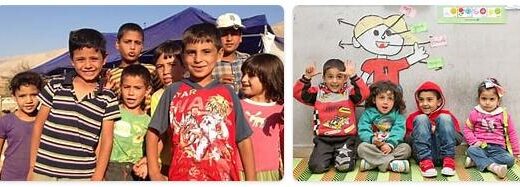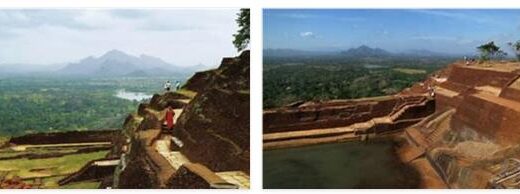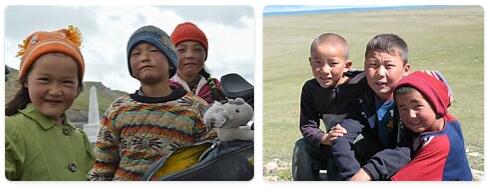Israel 2014
Yearbook 2014
Israel. Israel population in 2020 is estimated at 8,655,546. The tense situation between Israel and Palestine worsened during the year as a new armed conflict began between Israel and Palestinian resistance groups in Gaza.

Beginning in mid-March, intensive shootings took place between Israel and Gaza, which lasted for several days. At the end of June, three Israeli youths were kidnapped and killed in the Palestinian city of Hebron on the West Bank. Israel then launched an intensive search operation on the West Bank where more than 500 Palestinians were arrested and at least five people were killed. One day after the funeral of the Israeli youths, a young Palestinian was kidnapped and burned to death by settlers in East Jerusalem, part of the Palestinian West Bank. The incident was seen as an act of revenge and led to escalated violence between Israel and the Palestinian territories in the West, which had already been hit earlier this year by repeated acts of violence and revenge (see also Palestine).
During the late summer several proposals for a ceasefire were presented, but the majority of the proposals were rejected and when the ceasefire came into force it lasted only for a few hours. In July, Israel launched a ground offensive with soldiers and tanks in Gaza in order to destroy the tunnels dug between Gaza and Israel. That same month, the UN Security Council called on both parties to re-enter arms ceasefire, but neither the Israelis nor the Palestinians were satisfied with the content of the peace agreement.
In August, Israel announced that all tunnels between Israel and Gaza had been destroyed and that the operation was completed, and at the end of the month the parties entered into a permanent ceasefire. But the unrest continued with incidents in the area around the Holy Temple Mount in Jerusalem, which is one of Islam’s holiest sites. The unrest there led, among other things, to neighboring Jordan in November bringing his ambassador from Israel home. Later that month, Israeli Environment Minister Amir Peretz also resigned in protest of government policy.
At the same time as the conflict intensified, Israel continued with its controversial settler policy. During the year, Israeli Prime Minister Benjamin Netanyahu approved a large number of new Israeli housing on occupied land on the West Bank, including in East Jerusalem. Both foreign and domestic actors, such as the Peace Now organization and Israeli Justice Minister Tzipi Livni, criticized the government’s actions, which were interpreted as a protest against the new Palestinian unity government, which besides al-Fatah consisted of the Palestinian resistance movement Hamas. In September, the Israeli government decided to seize 400 acres of Palestinian land near Bethlehem in response to the summer murders of the three Israeli youths. During the autumn, further settlements in East Jerusalem were approved, which was criticized by both the EU and the US.
Later that month, the newly-appointed Swedish government decided to recognize Palestine as a state, which provoked anger in Israel, which among other things called its ambassador from Sweden. By the time the decision was made, 133 countries in the world had recognized Palestine.
According to topb2bwebsites, the conflict was further aggravated when two Palestinians in November attacked a synagogue in West Jerusalem. In the attack, described as the bloodiest in Jerusalem in six years, four rabbis and one policeman were killed. The two perpetrators were shot dead by Israeli police and in retaliation, their families’ homes were also demolished.
In the fall, the political disagreements within the government were strengthened regarding a controversial bill to define Israel as a Jewish nation, with letters claiming that only Jews would be entitled to national symbols and that Arabic would lose its official language status. The disagreement also applied to the content of the coming budget. After dismissing two of the government’s heaviest ministers, Justice Minister Tzipi Livni and Finance Minister Yasir Lapid in early December, Netanyahu demanded that the parliament be dissolved and the country run for re-election. The date for the new election was 17 March 2015.
During the year, former Prime Minister Ariel Sharon passed away after lying in a coma for eight years after a brain haemorrhage. Former Prime Minister Ehud Olmert was sentenced to six years in prison for bribery in connection with the construction of a large residential area in Jerusalem. Olmert had already been convicted of similar crimes two years earlier.
Country data
Area: 20,991 km2 (world ranking: 150)
Residents: 8,712,000
Population density: 415 per km2 (status 2017, world ranking: 98)
Capital: Yeruschalayim / Al-Quds (Jerusalem)
Official languages: Hebrew, Arabic
Gross domestic product: US $ 350.9 billion; Real growth: 3.3%
Gross national product (GNP, per resident and year): 37,270 US$
Currency: 1 New Shekel (NIS) = 100 Agorot
Embassy
Auguste-Viktoria-Str. 74
76, P.O. Box 330531, 14193 Berlin
Telephone 030 89045500,
Fax 030 89045222
www.israel.de
Government
Head of State: Reuven Rivlin, Head of Government and Foreign Affairs: Benjamin Netanyahu
National holiday: according to the Jewish calendar on the 5th Ijjar (Yom Ha’Atzmaut
Independence Day)
Administrative division
6 districts; Areas with Palestinian partial autonomy
State and form of government
No written constitution, laws with constitutional character
Republic
Parliament (Knesset) with 120 members, election every 4 years
Election of the head of state by Parliament every 7 years (no re-election)
Right to vote from 18 years.
Population: Israeli, last census 2008: 7,412,200 residents
80% Jews and others, 20% Israeli Arab
Cities (with population): (As of 2016) Yeruschalayim / Al-Quds (Jerusalem) 882,652 pop., Tel-Aviv-Yafo (Jaffa) 438,818, Hefa (Haifa) 279,591, Rishon LeZiyyon 247,323, Petah-Tikva 236,169, Ashdod 221,591, Netanya 210,834, Be’ér Scheva ‘(Beersheba) 205,810, Holon 190,838
Religions: 75% Jews, 18% Muslims, 2.0% Christians, 2% Druze and others (as of 2006)
Languages: Hebrew (Ivrith), Arabic; European languages
Employees by economic sector: Agriculture. 1%, industry 17%, business 82% (2017)
Unemployment (in% of all labor force): 2017: 4.2%
Inflation rate (in%): 2017: 0.2%
Foreign trade: import: 69.7 billion US $ (2017); Export: 53.8 billion US $ (2017)
Climate
Although Israel is a very small country, it has multiple climates. The climate in Israel is determined by its location between the subtropical dryness of the Sahara and the Arabian deserts on the one hand and the subtropical humidity of the Levant on the other. The climate depends on the distance to the Mediterranean Sea, on the altitude and the geographical latitude. Temperate and forested in the north, Israel is hot and desolate in the south.In total, 50% of the country is steppe and desert, with the Negev desert being the largest area. The subtropical Mediterranean climate prevails on the Mediterranean coast, characterized by dry, hot summers and rainy, mild winters.
January is the coldest month with average temperatures between 6 ° C and 15 ° C, July and August are the warmest months with 22 ° C to 33 ° C. The summers on the Mediterranean coast are characterized by high humidity, but are quite dry in the interior of the country, the Jordan Valley and the Negev. The highest temperatures are often reached in Eilat, locally up to 46 ° C. More than 70% of the average rainfall falls between November and March.
There is usually no rain from June to September. The amount of precipitation decreases sharply from north to south, so that in the far south an average of only 30 mm, in the north more than 900 mm per year can be expected. In the Negev in particular, the amount of precipitation varies greatly from year to year. In winter there can be snow in the higher regions, occasionally also in Jerusalem. The three peaks of Hermon are covered in snow for several months in winter.
The areas with precipitation of more than 300 mm per year are used particularly intensively for agriculture. About a third of the land can be built on.


